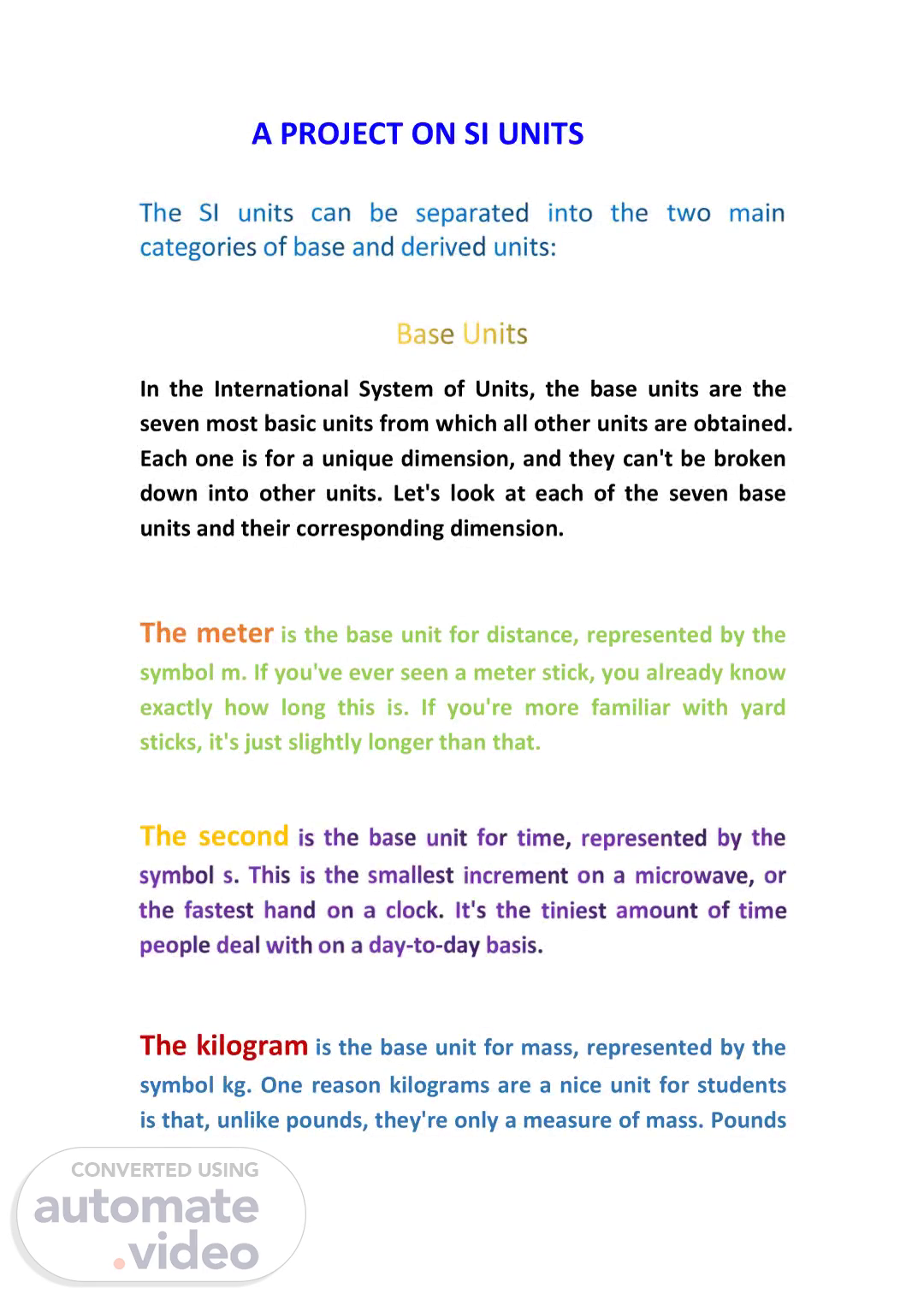Scene 1 (0s)
[Audio] A PROJECT ON SI UNITS In the International System of Units, the base units are the seven most basic units from which all other units are obtained. Each one is for a unique dimension, and they can't be broken down into other units. Let's look at each of the seven base units and their corresponding dimension. The meter is the base unit for distance, represented by the symbol m. If you've ever seen a meter stick, you already know exactly how long this is. If you're more familiar with yard sticks, it's just slightly longer than that. The second The kilogram is the base unit for mass, represented by the symbol kg. One reason kilograms are a nice unit for students is that, unlike pounds, they're only a measure of mass. Pounds.
Scene 2 (57s)
[Audio] can be used as a name for a mass unit or a weight (i.e., force) unit. This can be confusing for students. The ampere is the base unit for electric current, represented by the symbol A. Electric current is the rate of flow of electricity. It is responsible for powering everything from flashlights to the computer you're watching this on now. The kelvin is the base unit for temperature, represented by the symbol K. Kelvin is a unique temperature scale because it never goes to negative numbers. Nothing in the universe can be colder than zero kelvin. The candela is the base unit for luminous intensity, represented by the symbol cd. From the name, you might be able to guess that a standard candle has a luminous intensity of about 1 candela. If you look at a lit candle and a light bulb right next to each other, you'll be able to tell that the light bulb is a much more intense light. The candela is how we represent these different intensities using numbers. The mole.
Scene 3 (2m 9s)
[Audio] This can be represented using the following diagram;.
Scene 4 (2m 16s)
[Audio] The derived units include but not limited to the following; Physical Quantity Name Symbol Expressed in SI Base Units frequency hertz Hz s-1 force newton N m kg s-2 pressure, stress pascal Pa N m-2 = m-1 kg s- 2 energy, work, heat joule J N m = m2 kg s-2 power, radiant flux watt W J s-1 = m2 kg s- 3 electrical charge coulomb C A s electrical potential, emf volt V J C- 1 = m2 kg s-3 A-1 electrical resistance ohm Ω V A-1 = m2 kg s-3 A-2 electrical capacitance farad F C V-1 = m-2 kg-1 s4 A2 area square metre A m2 volume cubic metre V m3 speed, velocity metre per second v m/s acceleration metre per second squared a m/s2 density kilogram per cubic metre ρ kg/m3.
Scene 5 (3m 55s)
. .
